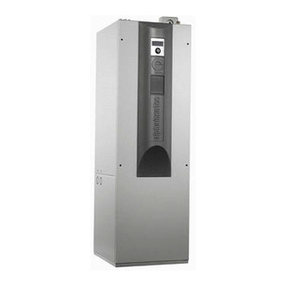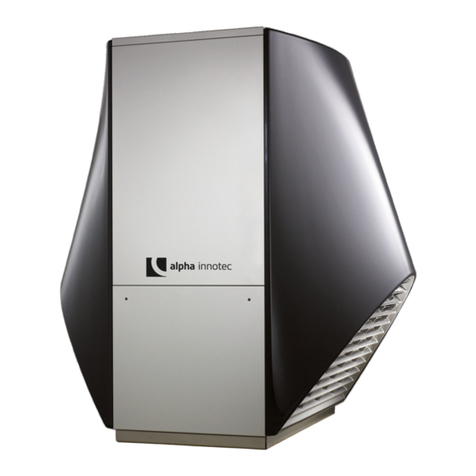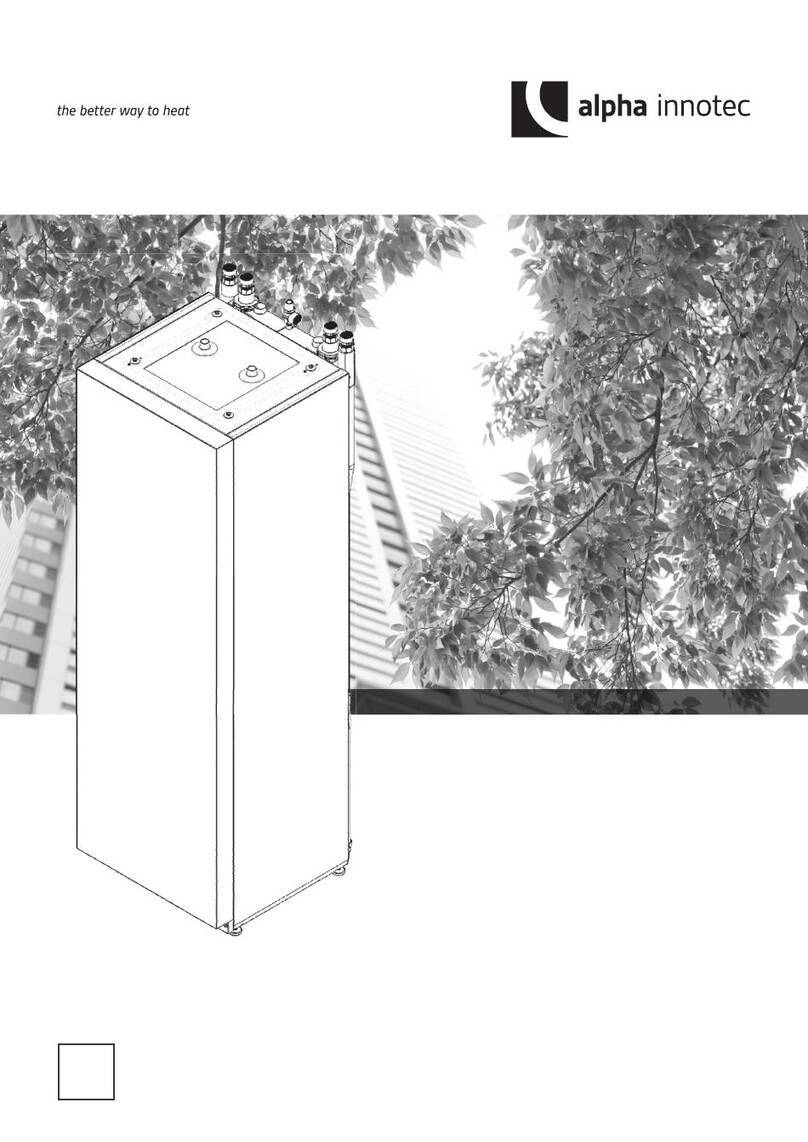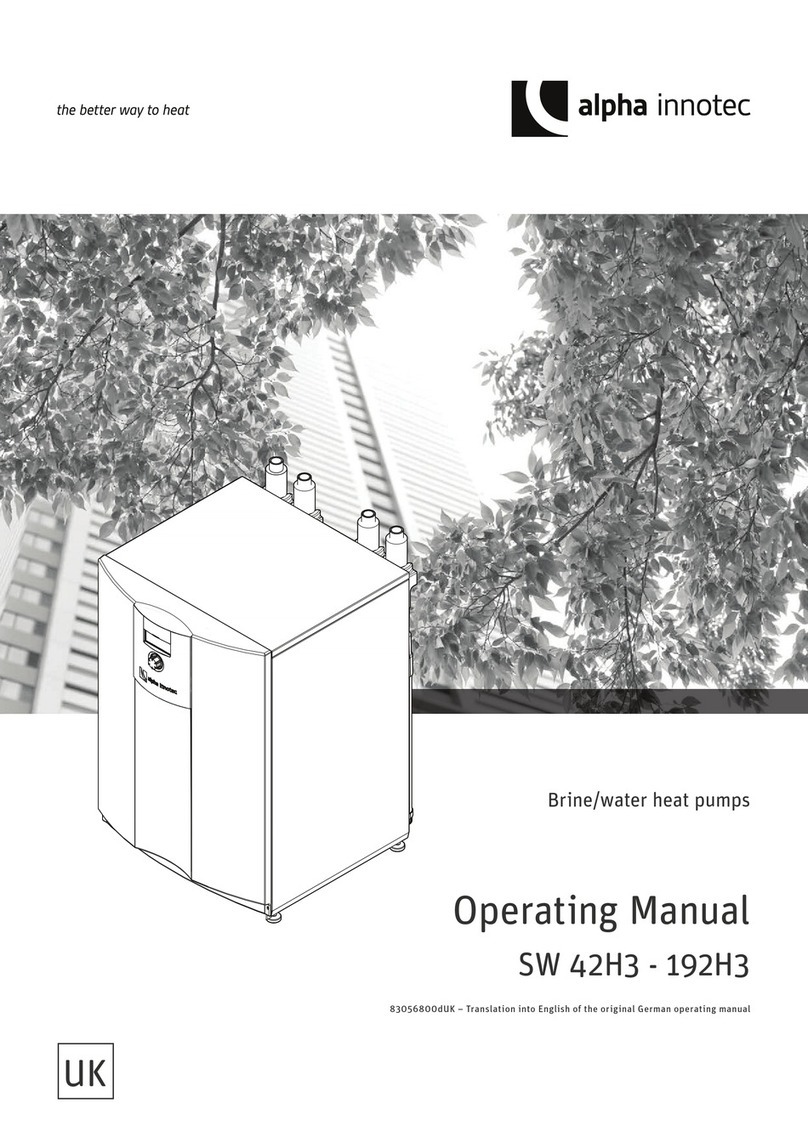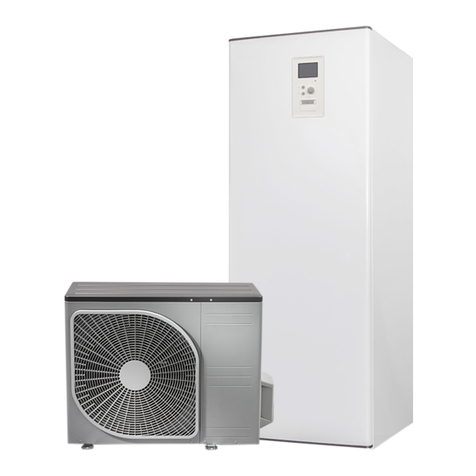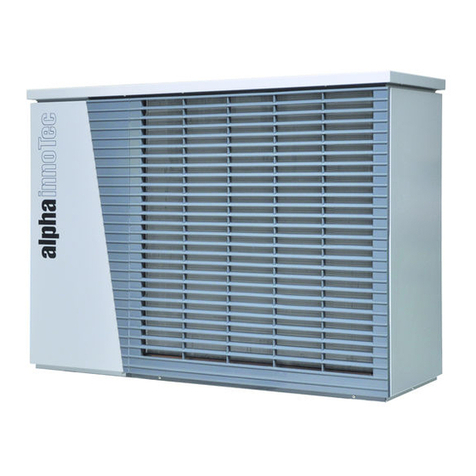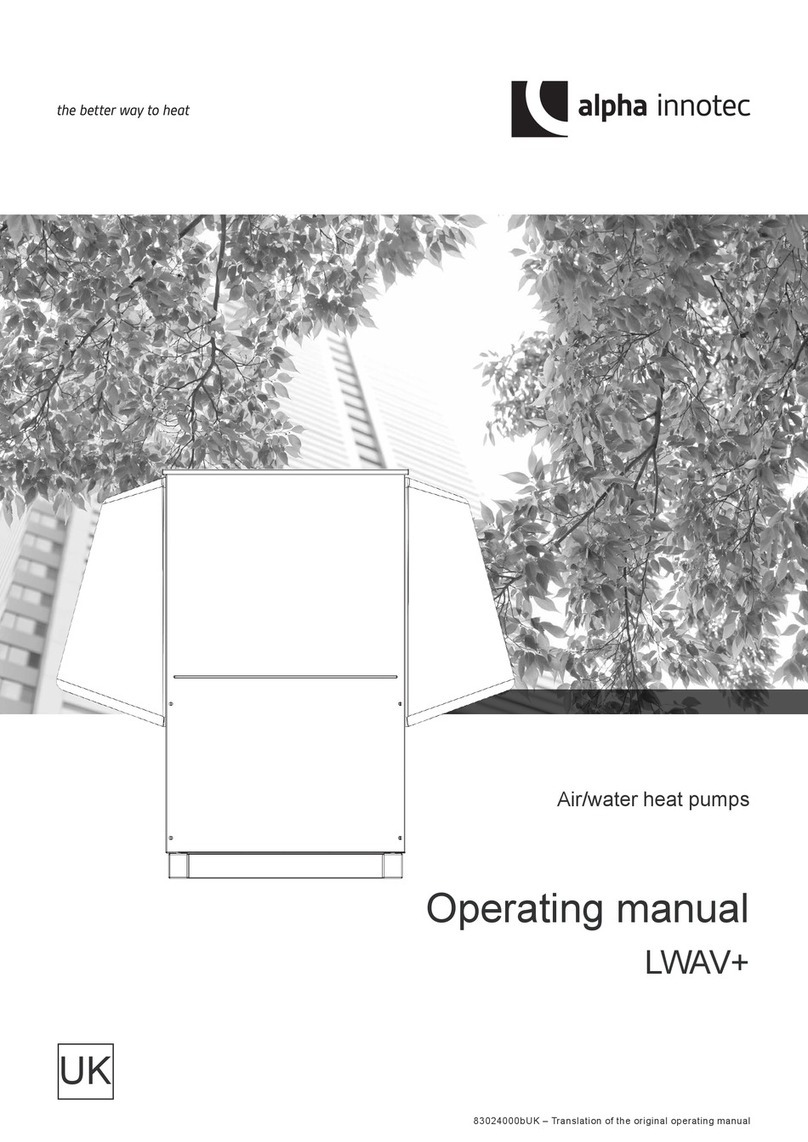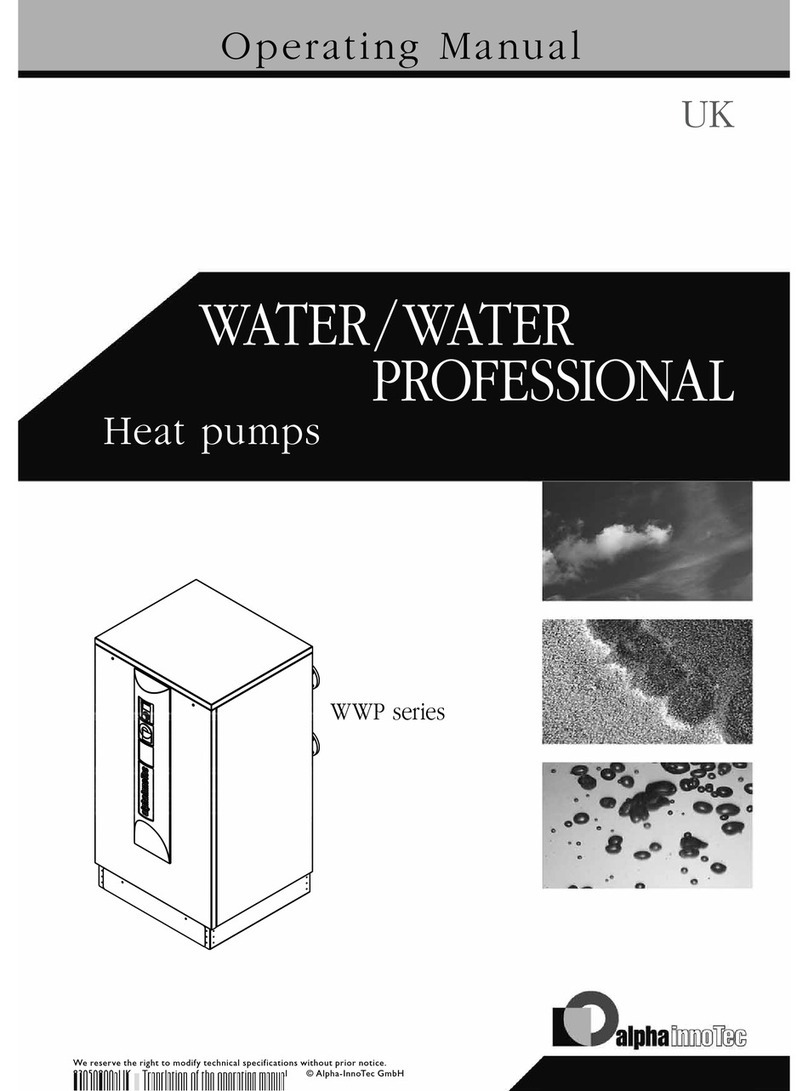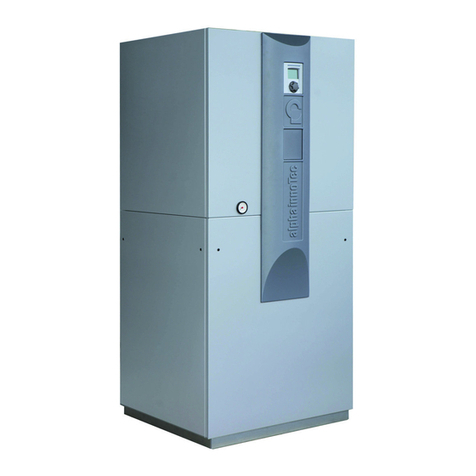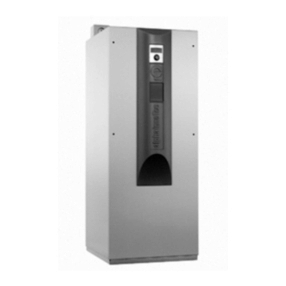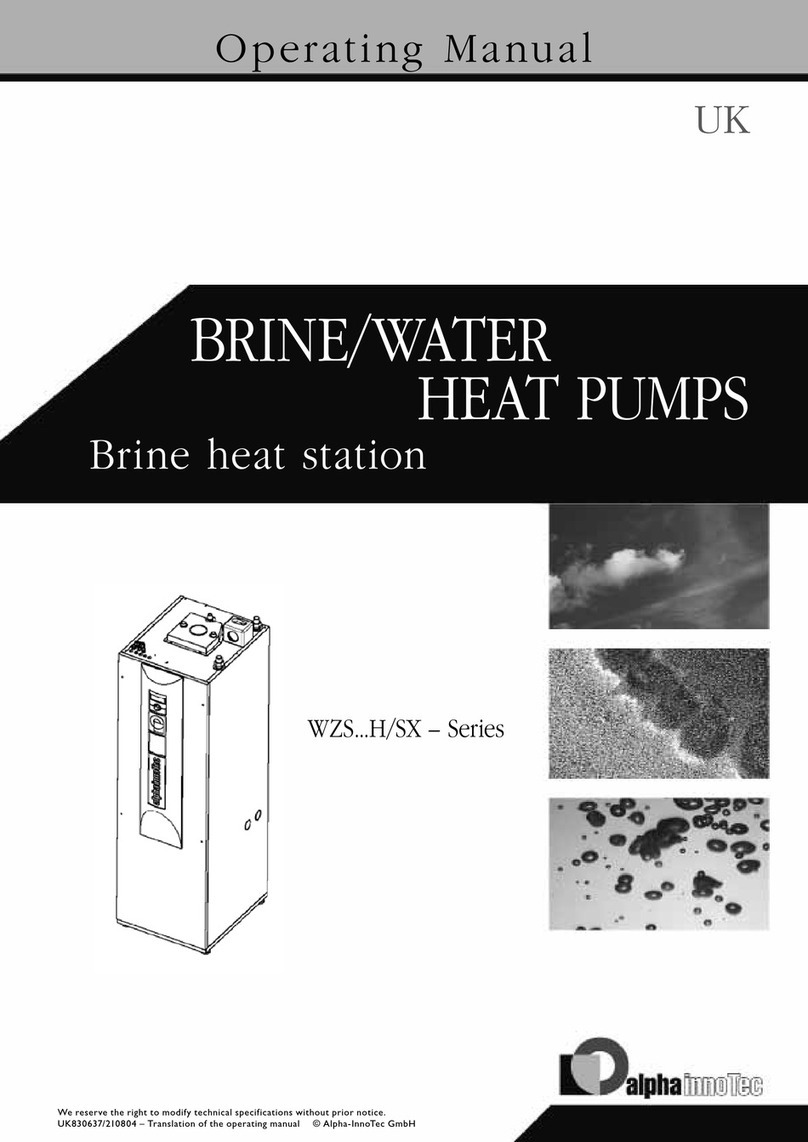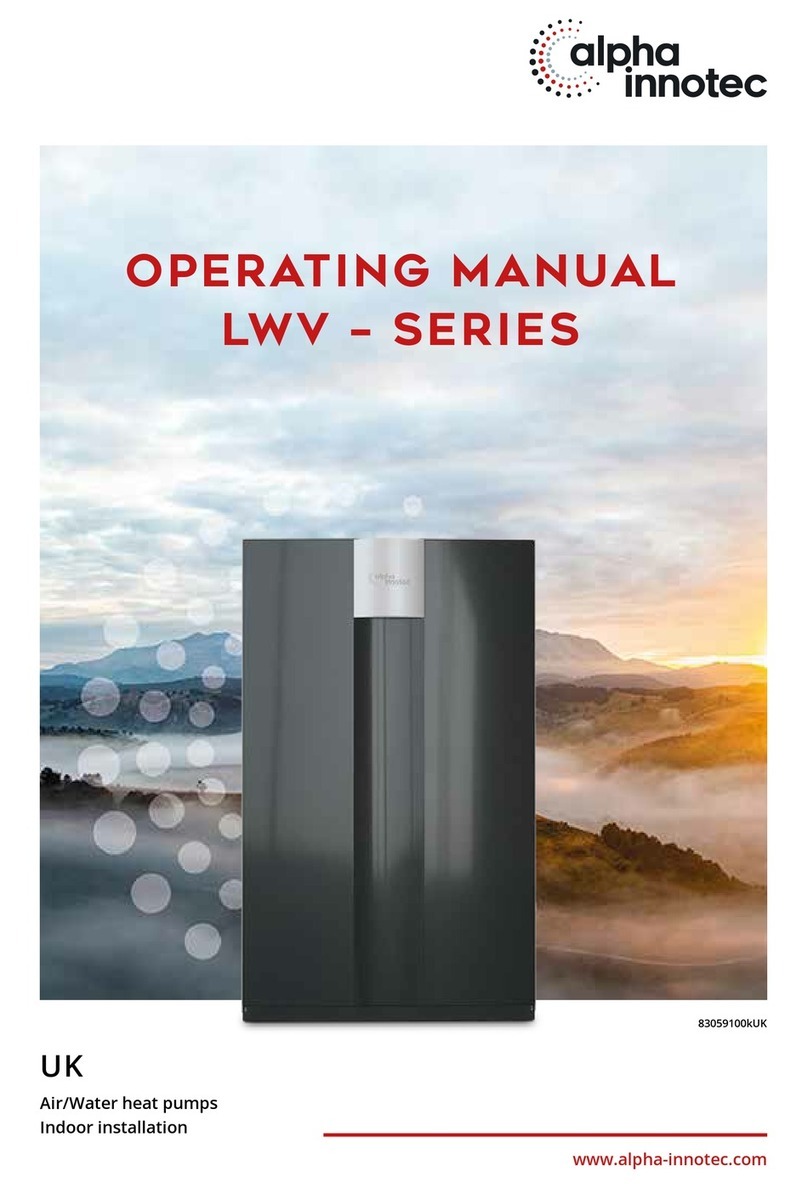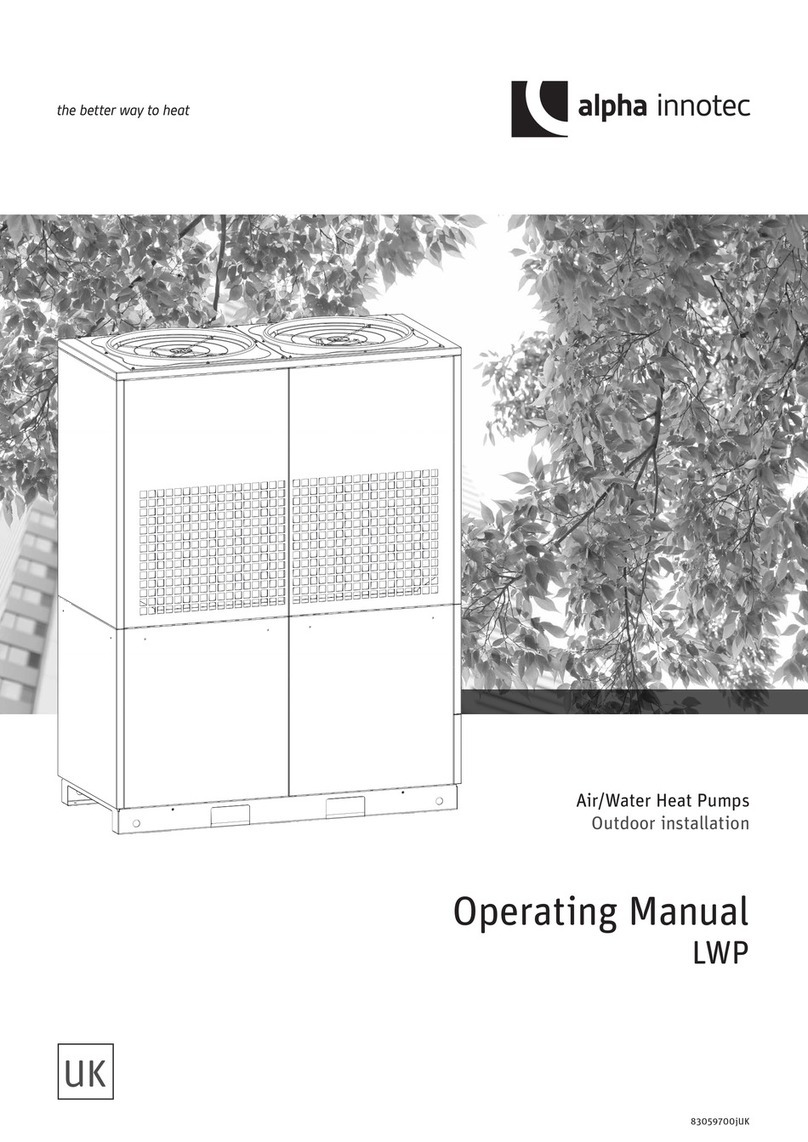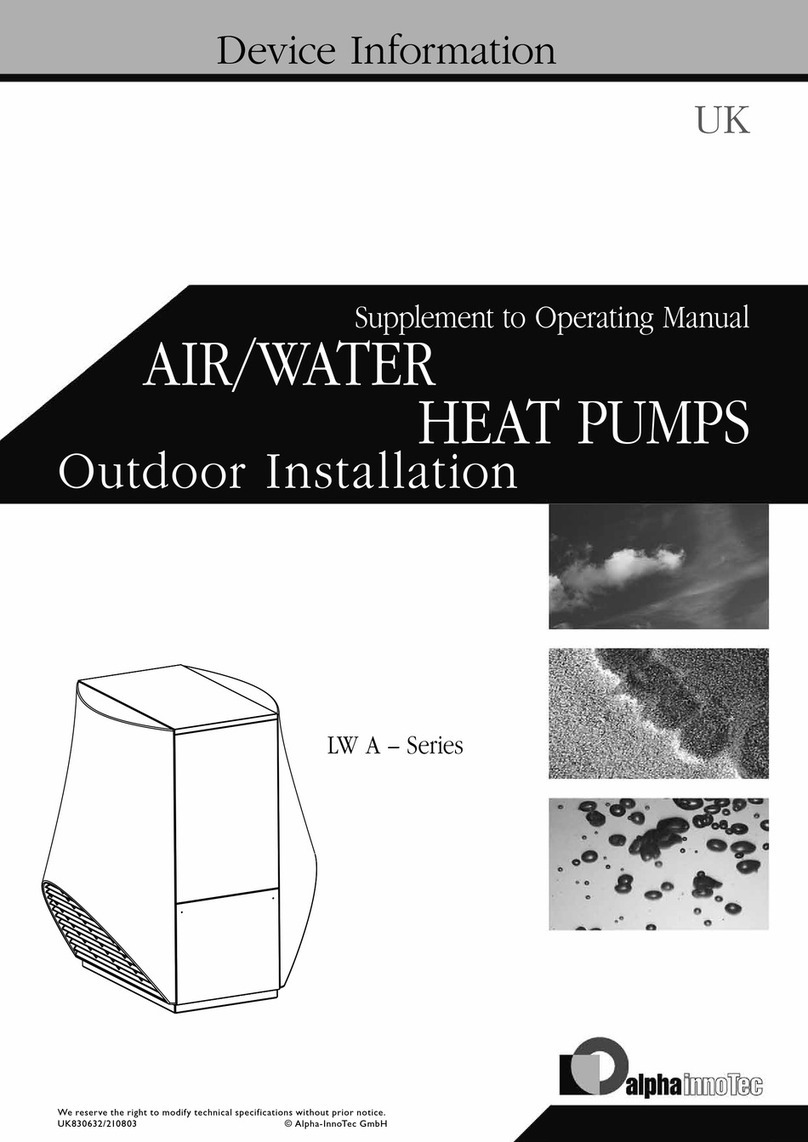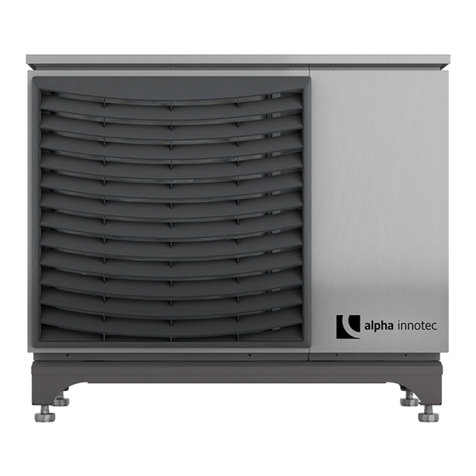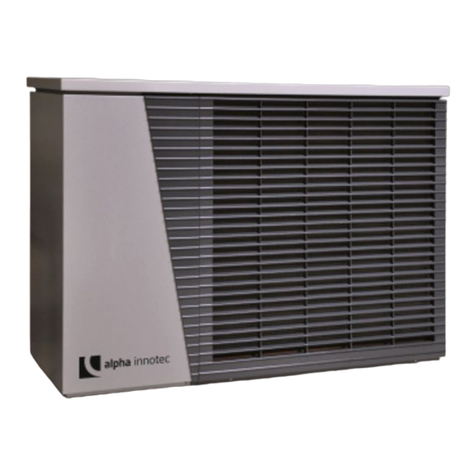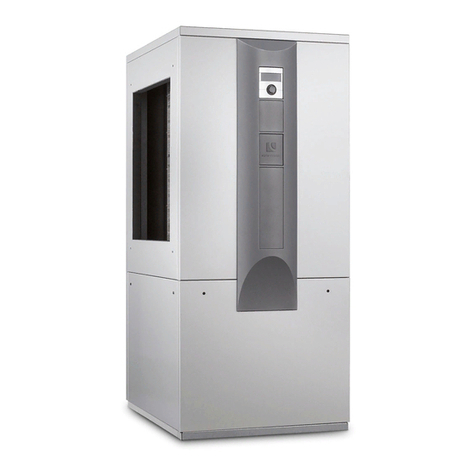3
Inhaltsverzeichnis
INFORMATION FOR USERS AND
QUALIFIED PERSONNEL
PLEASE READ FIRST..................................................................2
SYMBOLS .....................................................................................2
INTENDED USE..........................................................................4
DISCLAIMER................................................................................4
EC CONFORMITY .....................................................................4
SAFETY.........................................................................................4
CUSTOMER SERVICE ................................................................5
WARRANTY / GUARANTEE ....................................................5
DISPOSAL ....................................................................................5
INFORMATION FOR USERS
OPERATING PRINCIPLE OF HEAT PUMPS..........................5
AREA OF UTILISATION............................................................5
HEAT METERING .......................................................................6
OPERATION ................................................................................6
CARE OF THE UNIT..................................................................6
MAINTENANCE OF THE UNIT..............................................6
Cleaning and flushing of unit components........................7
MALFUNCTIONS.......................................................................7
INSTRUCTIONS FOR QUALIFIED PERSONNEL
SCOPE OF DELIVERY..................................................7
INSTALLATION ..........................................................................8
Installation area.....................................................................8
Transport to installation location......................................8
Installation..............................................................................9
INSTALLATION OF THE HYDRAULIC CONNECTIONS10
Buffer tank ...........................................................................10
Domestic water heating.....................................................10
Domestic hot water tank ..................................................10
Installing the housing..........................................................12
ELECTRICAL CONNECTIONS .............................................14
INSTALLATION OF THE CONTROL ELEMENT ...............16
FLUSHING AND FILLING THE UNIT..................................17
flushing and filling the heat source...................................17
flushing and filling the heating circuit ..............................17
INSULATING THE HYDRAULIC CONNECTIONS ..........19
COMMISSIONING ...................................................................19
DISMANTLING .........................................................................20
TECHNICAL DATA / SCOPE OF DELIVERY
SWP 371 – 691, SWP 291H - 561H ..................................22
Heating capacity/COP / power consumption /
heat pump pressure loss
SWP 371 ...............................................................................24
SWP 451 ...............................................................................25
SWP 581 ...............................................................................26
SWP 691 ...............................................................................27
SWP 291H ............................................................................28
SWP 561H ............................................................................29
DIMENSIONAL DRAWINGS AND INSTALLATION PLANS
SWP 371 - SWP 691
Dimensional drawings - moving dimensions...................30
Dimensional drawings with housing ................................31
SWP 291H - SWP 561
Dimensional drawings - moving dimensions...................32
Dimensional drawings with housing ................................33
Installation plans
SWP 371 – 691, SWP 291H - 561H ..................................34
SWP 371 – 691, SWP 291H - 561H ..................................35
TERMINAL DIAGRAM.............................................................36
CIRCUIT DIAGRAMS
SWP 371, SWP 451.............................................................37
SWP 581, SWP 691, SWP 561H....................................... 40
SWP 291H ............................................................................43
APPENDIX
EC DECLARATION OF CONFORMITY..............................46
GENERAL CHECKLIST ...........................................................47
COMPLETION REPORT FOR HEAT PUMP SYSTEMS ......49
CUSTOMER SERVICE
Addresses for service.........................................................50
We reserve the right to modify technical specifications without prior notice.
83053700bUK – Translation of the operating manual © Alpha-InnoTec GmbH
